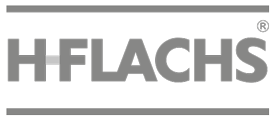About Flax
Flax Boards
For centuries, flax short fibers have been produced in the linen industry as waste product in the processing of flax into linen. They are used to make natural boards or stuffing material, for example for door seals. Flax is ideal for both. Flax boards are tensile and stretchy. They absorb moisture without damage and release it again. A big plus of the flax board is that it keeps its shape constantly, so it doesn’t shrink. Flax is characterized by very good heat and sound insulation.
The fire protection class is easily achieved by adding fire-retardant substances. Flax is not only suitable as a door panel, but also as a floor covering or as a board for furniture construction.
Closed cycle in the production of flax
The raw material is ideal for ecological construction and therefore particularly well suited for allergy sufferers. The bitter substances contained in flax keep insects and rodents away. The plant is not susceptible to mold or putrefaction. There is virtually no need for chemical treatment when growing. The closed production cycle and the full use of the plant is the special characteristic of flax. From organic cultivation to complete processing, composting and use as a mulch material, flax is a sustainable raw material.
The advantages of ECO Flax boards
Flax plant is 100% processed
FF = no formaldehyde in flax + glue
100% biodegradable
Flax matures in just 100 days
100% recyclable
Flax sheets have good thermal conductivity
Real ECO board because FF (formaldehyde-free)
One of the most environmentally friendly crops

